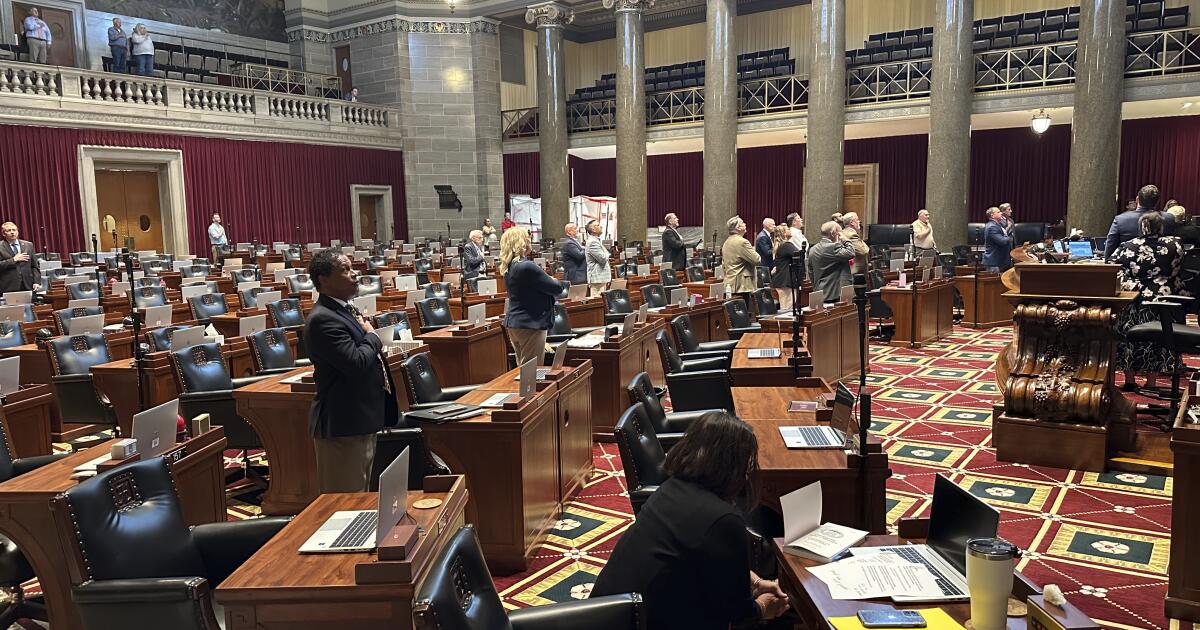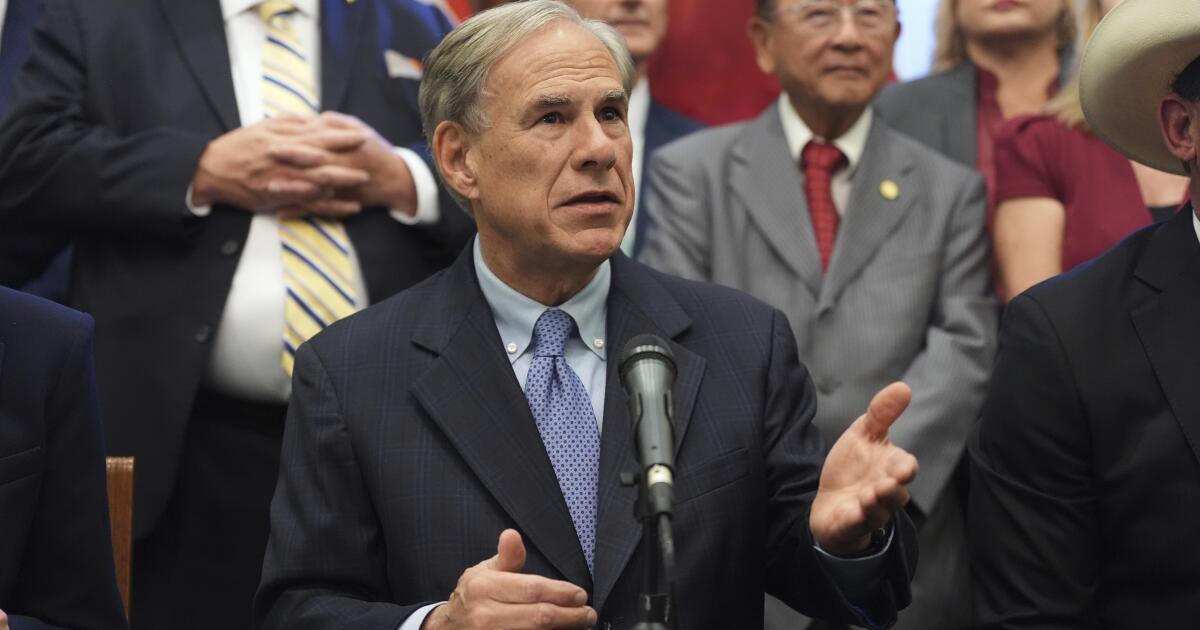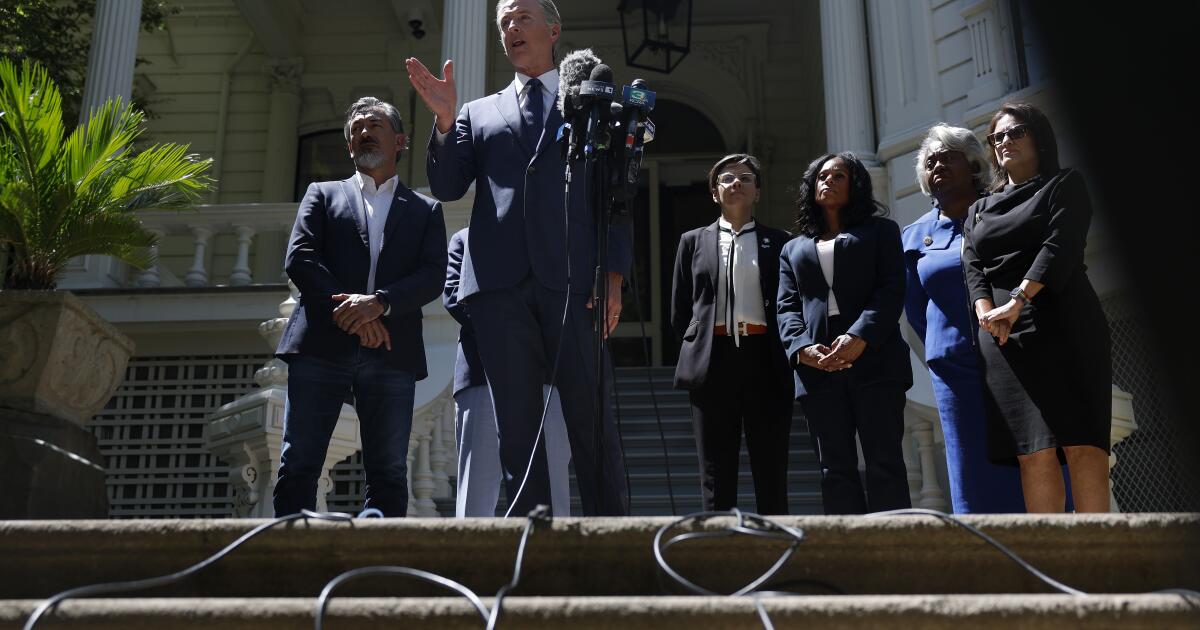Where states stand in the battle for partisan advantage in U.S. House redistricting maps
Sept. 4, 2025 10:40 AM PT
Lawmakers in Missouri are the latest to try to draw a new U.S. House map for the 2026 election that could improve the Republican Party’s numbers in Congress.
It’s a trend that began in Texas, at the behest of President Trump, to try to keep GOP control of the House next year. California Democrats responded with their own map to help their party, though it still requires voter approval.
Redistricting typically occurs once a decade, immediately after a census. But in some states, there is no prohibition on a mid-cycle map makeover. The U.S. Supreme Court also has said there is no federal prohibition on political gerrymandering, in which districts are intentionally drawn to one party’s advantage.
Nationally, Democrats need to gain three seats next year to take control of the House. The party of the president typically loses seats in the midterm congressional elections.
Here is a rundown of what states are doing.
Missouri lawmakers hold a special session
A special session called by Republican Gov. Mike Kehoe began Wednesday and will run at least a week.
Missouri is represented in the U.S House by six Republicans and two Democrats.
A revised map proposed by Kehoe would give Republicans a better chance at winning the seat held by Democratic U.S. Rep. Emanuel Cleaver by stretching the Kansas City-based district into rural Republican-leaning areas.
Although Democrats could filibuster in the Senate, Republicans could use procedural maneuvers to shut that down and pass the new map.
Texas Democrats walked out but Republicans prevailed
Democratic state House members left Texas for two weeks to scuttle a special session on redistricting by preventing a quorum needed to do business. But after that session ended, Republican Gov. Greg Abbott quickly called another one — and Democrats returned, satisfied that they had made their point and that California was proceeding with a counterplan.
Republicans hold 25 of the 38 congressional seats in Texas. A revised map passed Aug. 23 is intended to give Republicans a shot at picking up five additional seats in next year’s elections. Abbott’s signature made the map final.
California Democrats seek to counter Texas
Democrats already hold 43 of the 52 congressional seats in California. The Legislature passed a revised map passed Aug. 21 aimed at giving Democrats a chance to gain five additional seats in the 2026 elections.
Unlike Texas, California has an independent citizens’ commission that handles redistricting after the census, so any changes to the map need approval from voters. A referendum is scheduled for Nov. 4.
Indiana Republicans meet with Trump about redistricting
Indiana’s Republican legislative leaders met privately with Trump to discuss redistricting while in Washington, D.C., on Aug. 26. Some also met with Vice President JD Vance.
Several Indiana legislators came out in support of a mid-cycle map change following the meetings. But others have expressed hesitation. It remains unclear if Indiana lawmakers will hold a special session on redistricting.
Republicans hold a 7-2 edge over Democrats in Indiana’s congressional delegation.
Louisiana Republicans looking at times for a special session
Louisiana lawmakers are being told to keep their calendars open between Oct. 23 and Nov. 13. The U.S. Supreme Court is scheduled to hear arguments Oct. 15 over a challenge to the state’s congressional map.
Republican state Rep. Gerald “Beau” Beaullieu, who chairs a House committee that oversees redistricting, said the idea is to have lawmakers available to come back to work in case the Supreme Court issues a ruling quickly.
Republicans now hold four of Louisiana’s six congressional seats.
Ohio must redraw its maps before the 2026 midterms
Because of the way its current districts were enacted, the state Constitution requires Republican-led Ohio to adopt new House maps before the 2026 elections. Ohio Democrats are bracing for Republicans to try to expand their 10-5 congressional majority.
Democrats don’t have much power to stop it. But “we will fight, we will organize, we will make noise at every step of the process,” Ohio Democratic Party Chair Kathleen Clyde said.
New York Democrats try to change state law
New York, similar to California, has an independent commission that redraws districts after every census.
State Democrats have introduced legislation to allow mid-decade redistricting, but the soonest new maps could be in place would be for the 2028 elections. That is because the proposal would require an amendment to the state Constitution, a change that would have to pass the Legislature twice and be approved by voters.
Maryland Democrats planning a response to Texas
Democratic state Sen. Clarence Lam has announced he is filing redistricting legislation for consideration during the 2026 session. Democratic House Majority Leader David Moon also said he would sponsor legislation triggering redistricting in Maryland if any state conducted mid-decade redistricting. Democrats control seven of Maryland’s eight congressional seats.
Florida’s governor pledges support for redistricting
Florida Republican state House Speaker Daniel Perez said his chamber will take up redistricting through a special committee. Republican Gov. Ron DeSantis has reiterated his support for the state to join the redistricting fray, calling on the federal government to conduct a new census count and claiming that the Trump administration should “award” the state another congressional seat.
Twenty of Florida’s 28 U.S. House seats are occupied by Republicans.
Kansas Republicans haven’t ruled out redistricting
Republican state Senate President Ty Masterson didn’t rule out trying to redraw the state’s four congressional districts, one of which is held by the state’s sole Democratic representative. The Legislature’s GOP supermajority could do so early next year.
A court orders Utah to redraw its districts
Utah Republicans hold all four of the state’s U.S. House seats under a map the GOP-led Legislature approved after the 2020 census. But a judge ruled Aug. 25 that the map was unlawful because the Legislature had circumvented an independent redistricting commission that was established by voters to ensure districts don’t deliberately favor one party.
The judge gave lawmakers until Sept. 24 to adopt a map, which could increase Democrats’ chances of winning a seat.



